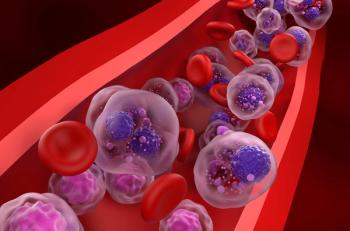
Hepatitis C Virus Enzyme Could Provide Novel Drug Target
Drug that targets interaction with RNA does not damage other proteins.
Drug that targets interaction with RNA does not damage other proteins.
Scientists in Italy say they have gained new insight into how the hepatitis C virus replicates as a result of studying the behavior of a key enzyme and creating a computer model that shows how it interacts with the viral genome.
The US Centers for Disease Control estimates that about 3 million people in the US are infected with hepatitis C, a bloodborne virus that causes inflammation of the liver. Hepatitis C is the leading cause of liver transplants in the country and chronic infection of the disease can lead to serious liver damage, cirrhosis of the liver and cancer of the liver.
Researchers analyzed the nonstructural protein 3 (NS3) helicase, which facilitates the replication of the hepatitis C virus, and published the study findings in the journal Nucleic Acids Research. In a news release, Giovanni Bussi, a study author and professor at the International School for Advanced Studies in Trieste, Italy, where the study was conducted, said that learning more about how the helicase operates could help scientists figure out how to block replication of the virus and stop the disease from spreading.
An enzyme specific to the hepatitis C virus, NS3, facilitates the work of polymerases, the molecules that build a replica of the RNA strand, note the authors. It unwinds and translocates along nucleic acids with an adenosine triphosphate (ATP)-dependent mechanism, states the study abstract.
“NS3 crawls along the RNA strand contracting and extending like a caterpillar and, as it does so, it releases the part of the virus to which the polymerase then attaches,” Andrea Pérez-Villa, a student from International School for Advanced Studies and first author of the paper, explained in the news release. “We decided to analyze this protein because, unlike others, it is only present in the hepatitis C virus,” she said. “This way, any drug capable of targeting its interaction with the RNA would not damage other proteins, for example, those belonging to the body being attacked by the virus. This means that, theoretically, the drug would have no side effects.”
Previous x-ray crystallography studies provide limited snapshot images of NS3 that were too few to reconstruct the whole process, according to the release. In this study, researchers used a computer simulation of available experimental data and created a model of the protein that enabled it to interact with the viral RNA, states Perez-Villa in the release. The model is depicted in a video included in the release that reports to show NS3 in action.
“During the process, ATP, the ‘fuel’ utilized by proteins, is consumed,” Bussi noted in the release. “Therefore our simulation also reproduced the system's interaction with ATP and subsequently with ADP, a waste product together with phosphate, after ATP had been utilized.”
The authors maintain that creation of the computer simulation provides, for the first time, a detailed description of the process that can serve as a guide for future theoretical study and experimentation.
Newsletter
Stay informed on drug updates, treatment guidelines, and pharmacy practice trends—subscribe to Pharmacy Times for weekly clinical insights.






































































































































































































